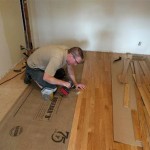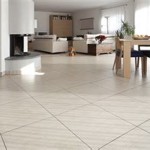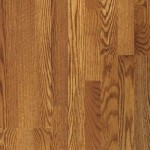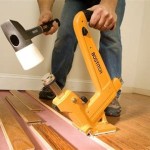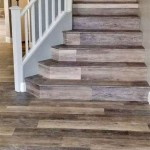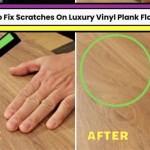House Rabbit Cage Flooring: A Comprehensive Guide
Selecting appropriate flooring for a house rabbit's cage is a crucial aspect of responsible rabbit ownership. The flooring material directly impacts the rabbit's comfort, hygiene, and overall health. An unsuitable choice can lead to pododermatitis (sore hocks), urinary problems, and other health issues. Therefore, understanding the properties of different flooring options and their respective advantages and disadvantages is paramount.
The primary considerations for rabbit cage flooring include absorbency, comfort, ease of cleaning, safety, and durability. Each of these factors contributes to the rabbit's well-being and the feasibility of maintaining a clean and healthy environment. Owners should carefully weigh these considerations when making their flooring selection.
Key Considerations for Choosing Rabbit Cage Flooring
Optimal rabbit cage flooring must meet several crucial criteria to ensure the animal's health and well-being. These criteria encompass the material's impact on the rabbit's feet, the ease of cleaning and maintenance, and the overall safety of the environment.
1. Hock Protection and Comfort: A rabbit's feet, particularly the hocks, are vulnerable to pressure sores and ulcerations if they are constantly exposed to hard or abrasive surfaces. Pododermatitis, commonly referred to as sore hocks, is a painful condition that can develop when rabbits are housed on wire mesh, concrete, or other unforgiving materials. The ideal flooring provides cushioning and support to distribute the rabbit's weight evenly, minimizing pressure points on the hocks. Materials like fleece, soft towels, or padded mats are preferable because they offer a degree of cushioning and prevent direct contact with hard surfaces.
2. Absorbency and Odor Control: Rabbits are naturally clean animals, but they do require a designated area for urination and defecation. Flooring materials with good absorbency help to wick away moisture, preventing urine scald and reducing ammonia build-up. Ammonia fumes can irritate the rabbit's respiratory system and contribute to other health problems. Absorbent materials like wood shavings (specifically kiln-dried pine or aspen shavings, avoiding cedar due to its toxic oils), paper-based litters, or hemp bedding can effectively absorb urine and control odors. Regular cleaning and replacement of soiled bedding are essential to maintain a hygienic environment.
3. Cleanliness and Ease of Maintenance: Rabbit cages require regular cleaning to prevent the accumulation of bacteria and the development of unpleasant odors. The ease of cleaning the flooring material is a significant consideration. Smooth, impermeable surfaces like linoleum or plastic are easy to wipe down, while absorbent materials require more frequent replacement. Some owners opt for a layered approach, using an absorbent base layer covered by a washable surface like fleece. This allows for easy spot cleaning and less frequent replacement of the absorbent layer. The time commitment required for cleaning should be factored into the flooring selection process.
Popular Rabbit Cage Flooring Options
Various materials are commonly used for rabbit cage flooring, each with its own set of advantages and disadvantages. A thoughtful evaluation of these options is crucial for selecting the most appropriate choice for a specific rabbit and owner.
1. Fleece Blankets and Pads: Fleece is a popular choice due to its softness, comfort, and washability. It wicks away moisture and provides a cushioning surface for the rabbit's feet. Fleece blankets can be easily laundered in a washing machine, making them a convenient and cost-effective option. However, fleece does not absorb urine, so it must be used in conjunction with an absorbent layer underneath, such as puppy pads or a layer of newspaper. The fleece should be changed regularly, ideally daily, to prevent the build-up of urine and bacteria.
2. Wood Shavings (Kiln-Dried Pine or Aspen): Kiln-dried pine or aspen shavings are absorbent and relatively inexpensive. They can effectively absorb urine and control odors. However, it is crucial to use only kiln-dried shavings, as the drying process removes harmful aromatic oils found in untreated wood. Cedar shavings should be avoided entirely, as these oils are toxic to rabbits and can cause respiratory problems and liver damage. Wood shavings should be replaced frequently to maintain a clean and hygienic environment.
3. Paper-Based Bedding: Paper-based bedding is an absorbent and dust-free alternative to wood shavings. It is made from recycled paper and is available in various forms, including pellets, shredded paper, and crumbles. Paper-based bedding is generally safe for rabbits, although some rabbits may ingest it. If ingestion occurs, monitor the rabbit for any signs of digestive upset. This material is also relatively low in dust compared to other bedding types, making it a good option for rabbits with respiratory sensitivities.
4. Hemp Bedding: Hemp bedding is a relatively new option that is gaining popularity among rabbit owners. It is highly absorbent, controls odors effectively, and is dust-free. Hemp bedding is also sustainable and biodegradable. It can be more expensive than other options, but its superior absorbency and odor control may make it a worthwhile investment. Some rabbits may initially be hesitant to use hemp bedding due to its texture, but they usually adapt quickly.
5. Linoleum or Vinyl Flooring: Linoleum or vinyl flooring provides a smooth, impermeable surface that is easy to clean. It can be used as a base layer in the cage, covered with fleece or other soft materials for comfort. Linoleum or vinyl is not absorbent, so it must be used in conjunction with absorbent bedding in the designated litter area. It is important to choose a non-toxic linoleum or vinyl product, as some materials may contain harmful chemicals. The flooring must also be securely attached to the cage to prevent the rabbit from chewing on it.
6. Grass Mats or Rugs: Natural grass mats or rugs can provide a comfortable and stimulating surface for rabbits. They allow rabbits to engage in natural digging and chewing behaviors. However, grass mats are not absorbent and can be difficult to clean if they become soiled with urine or feces. They should be used in conjunction with an absorbent litter area. It's important to ensure that the mat is made from rabbit-safe materials, avoiding those treated with pesticides or other harmful chemicals. These mats are also susceptible to being quickly destroyed by chewing, so their longevity can be limited.
Addressing Specific Flooring Challenges
Certain challenges may arise when selecting and maintaining rabbit cage flooring. These challenges can relate to the rabbit's individual behavior, health conditions, or the specific environment in which the cage is located. Addressing these challenges requires careful observation and adaptation of the flooring system.
1. Rabbits with Urinary Problems: Rabbits with urinary problems, such as bladder sludge or urinary tract infections, may urinate more frequently or produce urine with a stronger odor. In these cases, highly absorbent flooring materials like hemp bedding or paper-based pellets are recommended. The flooring should be changed frequently to prevent urine scald and minimize ammonia build-up. Regular veterinary check-ups are essential to manage the underlying urinary condition.
2. Rabbits Who Chew on Their Flooring: Some rabbits have a tendency to chew on their bedding, which can be harmful if the material is indigestible or toxic. In these cases, it is important to choose flooring materials that are safe for ingestion or that are difficult for the rabbit to chew. Fleece blankets and paper-based bedding are generally safe, but wood shavings and grass mats may pose a choking hazard. Providing the rabbit with plenty of chew toys and enrichment activities can help to redirect their chewing behavior away from the flooring.
3. Controlling Cage Odor: Even with absorbent flooring, rabbit cages can develop unpleasant odors if they are not cleaned regularly. Implementing a consistent cleaning schedule is crucial for odor control. This includes daily spot cleaning of soiled areas and weekly complete cage cleanings. Using a pet-safe enzymatic cleaner can help to break down organic matter and eliminate odors. Good ventilation in the room where the cage is located is also important for preventing odor build-up.
4. Managing Allergies: Both rabbits and their owners can experience allergies to certain bedding materials. If a rabbit exhibits signs of allergies, such as sneezing, watery eyes, or skin irritation, it is important to switch to a hypoallergenic flooring option like fleece or dust-free paper-based bedding. Owners with allergies may also benefit from using a HEPA air filter in the room where the cage is located. Regular cleaning and vacuuming can help to minimize allergens in the environment.
5. Preventing Sore Hocks: As mentioned, sore hocks (pododermatitis) are a common problem in rabbits housed on hard or abrasive surfaces. Preventing sore hocks requires providing a soft, cushioned flooring surface that distributes the rabbit's weight evenly. Fleece blankets, padded mats, or thick layers of soft bedding are all effective options. Regularly inspect the rabbit's hocks for any signs of redness, swelling, or hair loss. If sore hocks develop, veterinary treatment is necessary, which may include topical medications, pain relievers, and changes to the rabbit's environment.

The Best Rabbit Flooring For Cages And Agility

What Is The Best Floor For My Bunny Enclosure Bunnyproof

Pawhut Wooden Indoor Rabbit Hutch Elevated Cage Habitat With No Leak Tray Enclosed Run Wheels Small D51 126bn The Home Depot

Gdlf Two Floors 58 Wooden Indoor Rabbit Guinea Pig Pet Cage On Wheels Waterproof Com

Best Bunny Enclosures Ideas For Pens Cages Ohio Holland Lops

What Can You Line A Rabbit Hutch With Home Roost

The Best Flooring For Rabbits

Gdlf Two Floors 58 Wooden Indoor Rabbit Guinea Pig Pet Cage On Wheels Waterproof Com

Best Bunny Enclosures Ideas For Pens Cages Ohio Holland Lops

Large Indoor Rabbit Hutch Diy Cage Ideas Accessories Spiffy Pet S Bunny Rabbits
Related Posts


